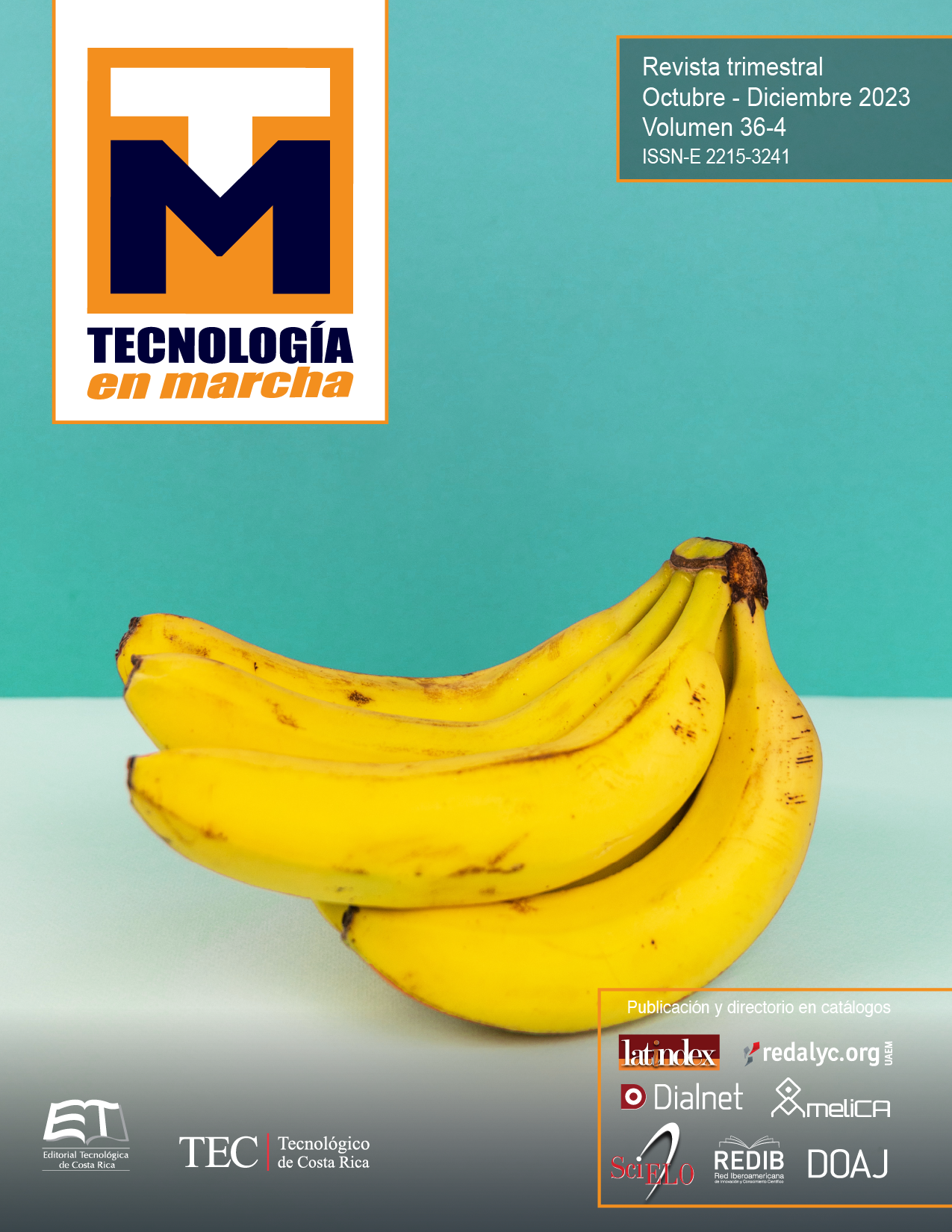Assessment of the Ocloro River’s environmental health, using a mixed methodology
Main Article Content
Abstract
The sustainability of urban areas nowadays faces significant challenges, due to high levels of pollution caused by population density. Therefore, the availability of water resources appears to be becoming increasingly compromised, as a result of inappropriate management of the solid and liquid waste generated by different human activities. The Ocloro River is a clear example of this problem, as evidenced by the deterioration of its environmental health. A mixed methodology was used to know about it, the first method was to characterize water quality using physicochemical and microbiological parameters, later on, the determination of the Duch index, giving a total of 16 samples of class 5 “extreme contamination” and 4 samples of class 4 “severe contamination”, from 2019 to 2021. In the second stage, a perception survey was conducted among a specific sector of the Barrio Luján population, approaching information from 80 homes, where 54 people indicated that the river pollution had affected them; additionally, the majority rated the level of pollution as 8, where 10 was the value with the highest level of pollution. Finally, the POSH method was used, which allowed the identification of some of the main point sources of pollution near the river, determining 27.1 % of high pollution, 22.3 % of moderate pollution, and 50,6 % of reduced pollution; this last one corresponds to the northern part of the river micro-basin in the communities of San Pedro, Los Yoses, and Francisco Peralta.
Article Details

This work is licensed under a Creative Commons Attribution-NonCommercial-NoDerivatives 4.0 International License.
Los autores conservan los derechos de autor y ceden a la revista el derecho de la primera publicación y pueda editarlo, reproducirlo, distribuirlo, exhibirlo y comunicarlo en el país y en el extranjero mediante medios impresos y electrónicos. Asimismo, asumen el compromiso sobre cualquier litigio o reclamación relacionada con derechos de propiedad intelectual, exonerando de responsabilidad a la Editorial Tecnológica de Costa Rica. Además, se establece que los autores pueden realizar otros acuerdos contractuales independientes y adicionales para la distribución no exclusiva de la versión del artículo publicado en esta revista (p. ej., incluirlo en un repositorio institucional o publicarlo en un libro) siempre que indiquen claramente que el trabajo se publicó por primera vez en esta revista.
References
M. B. De Macedo, M. N. Gomes Juníor, T. R. Pereira de Oliveira , M. H. Giacomoni , M. Imani, K. Zhang, C. A. Ferreira do Lago y E. M. Mendiondo, «Low Impact Development practices in the context of United Nations Sustainable Development Goals: A new concept, lessons learned and challenges» Critical Reviews in Environmental Science and Technology, nº https://doi.org/10.1080/10643389.2021.1886889, 2021.
Ministerio de energía y Ambiente, Ministerio de Salud, Instituto costarricense de acuductos y alcantarillados, «Política Nacional de Saneamiento en Aguas Residuales 2016-2045» 2016. [En línea]. Available: https://www.aya.go.cr/Noticias/Documents/Politica%20Nacional%20de%20Saneamiento%20en%20Aguas%20Residuales%20marzo%202017.pdf. [Último acceso: 10 11 2021].
Ministerio de Ambiente y Energía, Instituto Costarricense de Acueductos y Alcantarillado, «Ríos Limpios: Estrategia Nacional para La Recuperación de Cuencas Urbanas 2020-2030» 2020. [En línea]. Available: http://www.da.go.cr/estrategia-rios-limpios/. [Último acceso: 04 10 2021].
A. L. Hernández Campos y M. L. Ulate González, «Determinación del impacto en la calidad del agua en la parte alta de la microcuenca del río Porrosatí, por vertido de aguas residuales, para la realización de planes y acciones de manejo de recursos hídricos» (Tesis licenciatura, Universidad Nacional), Heredia, 2016.
Ministerio de Ambiente y Energía, Fondo Mundial del Ambiente y Programa de las Naciones Unidad para el Desarrollo, «Diagnóstico Multidimensional: Análisis del Estado de Situación del Corredor Biológico Interurbano María Aguilar» 2019. [En línea]. Available: https://www.cr.undp.org/content/costarica/es/home/library/diagnostico-multidimensional-del-corredor-biologico-interurbano-.html. [Último acceso: 09 10 2021].
S. Guevara-Víquez, « Informe Inundaciones en Barrio Luján,» (Informe de tesis doctoral Universidad Paris Este), Paris, 2019.
Ministerio de Energía y Ambiente, «Reglamento para la Evaluación y Clasificación de la Calidad de Cuerpos de Agua Superficiales» (Decreto No 33903-MINAE-S), San José, 2007.
S. Foster, R. Hirata, D. Gomes, M. D´Elia y M. Paris , Julio 2003. [En línea]. Available: https://documents1.worldbank.org/curated/es/229001468205159997/pdf/25071PUB01Spanish10BOX0334116B01PUBLIC1.pdf. [Último acceso: 03 01 2021].
Instituto Meteorológico Nacional , «Base de datos estación de Zapote» (Consulta institucional), San José, 2021.
Desinventar, «Base de datos Costa Rica» 2020. [En línea]. Available: https://db.desinventar.org/DesInventar/results.jsp. [Último acceso: 09 09 2021].
S. Foster, R. Hirata, D. Gomes, M. D´Elia y M. Paris, «Protección de la calidad del agua subterránea: guía para empresas de agua, autoridades municipales y agencias ambientales.» Julio 2002. [En línea]. [Último acceso: 01 03 2021].

